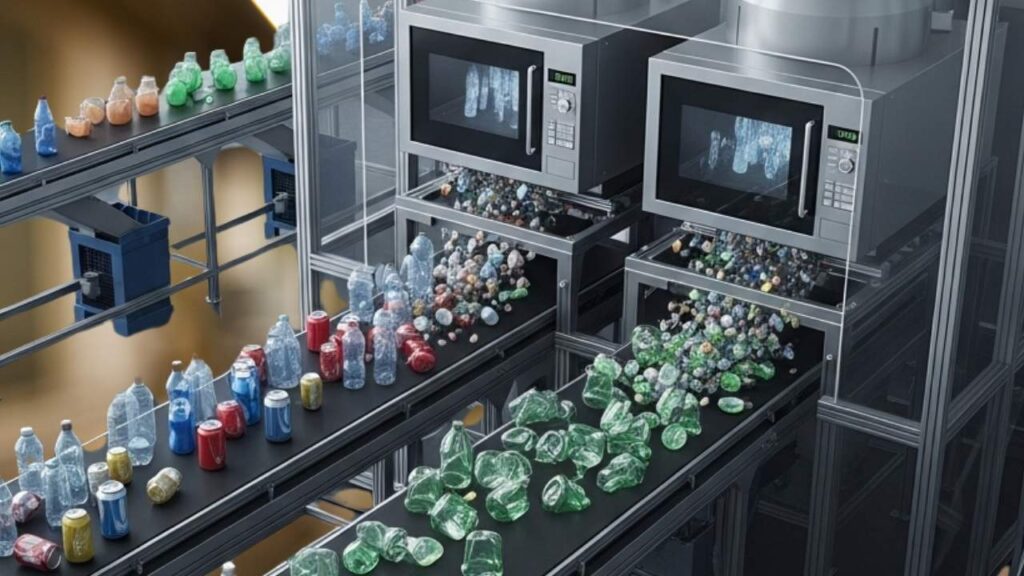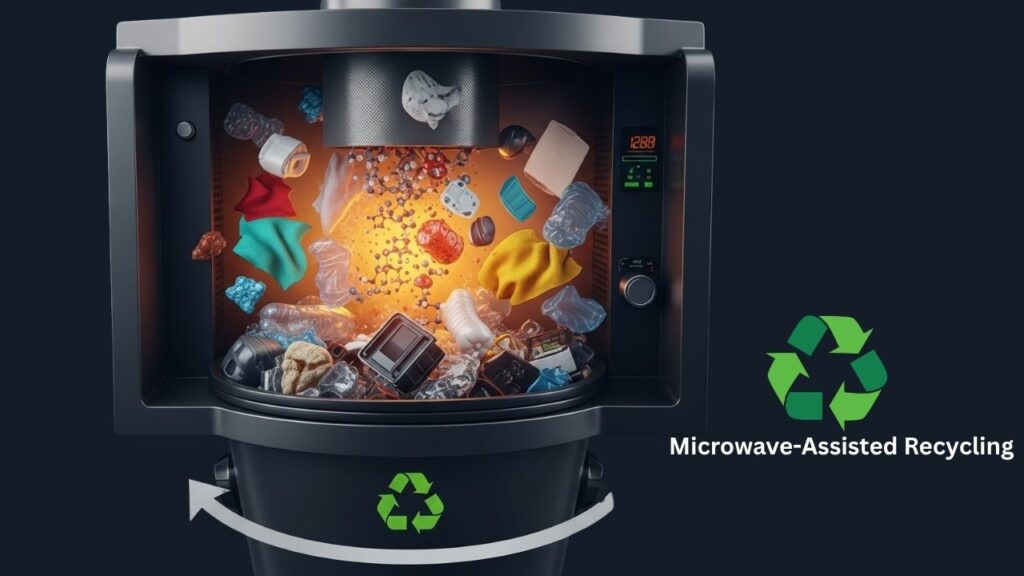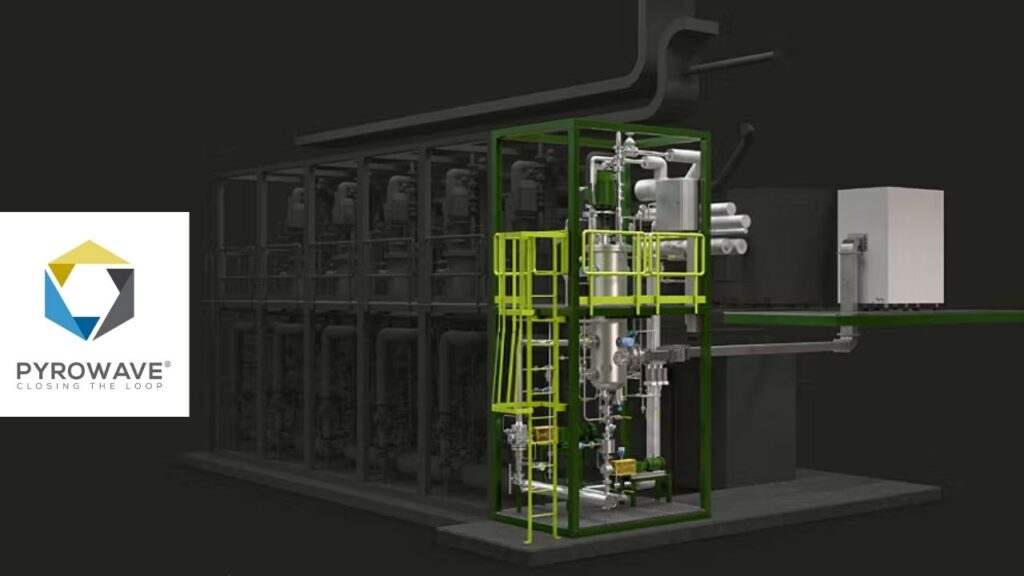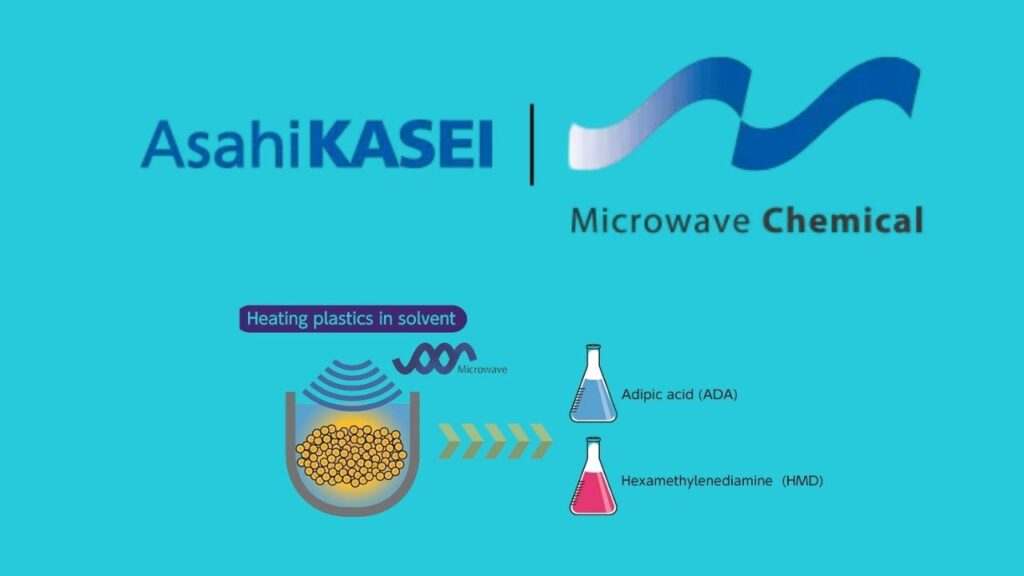How Microwaves May Be the Future of High-Speed Recycling: In the global fight against waste and pollution, a surprising new ally has entered the arena: microwaves. Not the household kind used to reheat leftovers, but powerful, industrial-scale microwave systems that can break down waste at the molecular level. This method, known as microwave-assisted recycling, has the potential to revolutionize how we handle plastics, electronics, and even textiles—by turning trash back into usable resources.

As traditional recycling systems struggle to keep up with modern waste, experts are now looking to microwaves as a high-speed, energy-efficient, and low-emissions alternative. Backed by leading research institutes and major companies, this technology is moving quickly from labs to large-scale industrial pilot programs.
How Microwaves May Be the Future of High-Speed Recycling
| Aspect | Details |
|---|---|
| Technology | Microwave-Assisted Recycling (Depolymerization, Pyrolysis) |
| Key Developers | Pyrowave (Canada), Asahi Kasei & Microwave Chemical (Japan), gr3n (Spain), Rice University (USA) |
| Core Materials | Plastics (PS, PET, PA66), e-waste (PCBs, wires), textiles, bioplastics |
| Efficiency Gains | Pyrowave reports ~40% energy savings over virgin plastic production |
| CO₂ Reduction Potential | gr3n’s PET plant projected to save ~2 million tons of CO₂ |
| Commercial Rollout | PET and nylon plants expected by 2025 |
| Scientific Backing | Published in Nature Communications, Advanced Sustainable Systems, ACS Sustainable Chem. Eng. |
| Official Reference | Pyrowave Official Website |
Microwave-assisted recycling represents a paradigm shift in how we approach the global waste crisis. By unlocking the ability to break waste down into its most valuable building blocks—cleanly, efficiently, and at scale—this technology could be a cornerstone of the future circular economy.
With support from industry leaders, academic research, and progressive policy, microwave recycling is moving rapidly from niche innovation to industrial solution. The path ahead will require investment, infrastructure, and cooperation, but the potential rewards—cleaner cities, reduced emissions, and conserved resources—are immense.
If we act wisely and support the technologies that matter, we really can turn trash into treasure.
What Is Microwave-Assisted Recycling?
Microwave-assisted recycling is a process that uses focused electromagnetic radiation—specifically microwaves—to break down materials such as plastics, e-waste, and textiles into their chemical building blocks. This is a form of chemical recycling, different from traditional mechanical methods that simply shred and melt plastics, degrading their quality over time.

Microwave technology allows for precise, rapid heating of specific bonds, accelerating chemical reactions that transform polymers back into monomers—the original molecules used to make plastic. These monomers can then be reused to manufacture high-quality, virgin-grade plastic products, closing the loop.
This process is particularly effective for polymers that are difficult to recycle mechanically, such as polystyrene (PS), polyethylene terephthalate (PET), and nylon-66 (PA66).
How It Works: Two Core Methods
Microwave-assisted recycling typically uses one of the following techniques:
1. Microwave Pyrolysis
- Conducted in oxygen-free environments.
- Ideal for e-waste, mixed plastics, and organic-rich waste.
- Converts materials into synthetic gas, oils, and carbon char.
- Example: Rice University’s flash Joule heating recovers metals from PCBs in milliseconds at lower energy and cost than smelting.
2. Microwave-Assisted Depolymerization
- Targets a single polymer type (e.g., PET or PS).
- Breaks chemical bonds in polymers using catalysts under microwave heat.
- Produces high-purity monomers that can be reused.
- Example: Pyrowave’s process returns 97% pure styrene from waste polystyrene.
These methods differ from conventional chemical recycling because microwaves heat materials from the inside out, enabling faster and more uniform decomposition of polymers without burning or oxidizing the feedstock.
The Global Waste Problem
To understand the significance of this breakthrough, we must look at the scale of the waste crisis:
- According to the OECD’s Global Plastics Outlook (2022), only 9% of plastic waste is recycled globally.
- The United Nations estimates that 53.6 million metric tons of e-waste were generated in 2019, with just 17.4% being formally collected and recycled.
- The rest ends up in landfills, incinerators, or illegal dumps—releasing toxic pollutants and wasting valuable resources.
Traditional recycling systems, which rely on manual sorting, mechanical shredding, and re-melting, are inefficient and prone to quality loss. Worse, mixed or multilayer plastics, common in packaging, are often non-recyclable at all.
Real-World Examples and Pilot Projects
Microwave-assisted recycling isn’t just theoretical. It’s already being tested and deployed by industrial leaders:
Pyrowave (Canada)

- Focus: Polystyrene (PS)
- Technology: Catalytic microwave depolymerization
- Achievement: Recovered 97% pure styrene monomers from PS
- Partners: Michelin, Recyc-Québec
- Energy use: ~40% lower than virgin styrene production
gr3n (Spain/Switzerland)
- Focus: Polyethylene Terephthalate (PET)
- Technology: Microwave-Assisted Depolymerization (MADE)
- Output: Ethylene glycol and terephthalic acid
- Planned capacity: 40,000 tons/year
- CO₂ savings: 2 million tons over plant lifetime
- Backed by: EU’s Horizon 2020, Indorama Ventures, BRAIN Biotech
Asahi Kasei + Microwave Chemical (Japan)

- Focus: Nylon-66 (PA66)
- Output: Hexamethylenediamine (HMD)
- Timeline: Commercial pilot by 2025
- Goal: Create a circular system for automotive and textile-grade nylon
Rice University (USA)
- Focus: Electronic waste (PCBs)
- Technology: Flash Joule Heating
- Achievement: Extracted 60–80% of precious and rare metals in milliseconds
- Published in: Nature Communications (2021)
These projects are leading the way toward scalable, cost-effective microwave recycling that can integrate into current supply chains.
Environmental and Economic Benefits
Lower Carbon Emissions
- Chemical recycling using microwaves can reduce GHG emissions by 50–70%, depending on the feedstock and energy source.
- For example, gr3n’s PET recycling avoids fossil fuel extraction and cuts energy use significantly.
Energy Efficiency
- Targeted heating of molecular bonds reduces wasteful thermal energy.
- Processes operate at lower temperatures compared to incineration or pyrolysis.
Resource Recovery
- Recovers virgin-quality monomers from contaminated or multi-use waste streams.
- Enables circular production in sectors like automotive, electronics, textiles, and packaging.
Reduced Toxicity
- Unlike incineration, microwave pyrolysis in oxygen-free conditions avoids dioxins, tars, and heavy-metal ash.
Technical Challenges and Considerations
Despite its promise, microwave recycling must overcome several hurdles before mass adoption:
Feedstock Purity
- Microwave depolymerization requires relatively pure input materials.
- Post-consumer plastic is often contaminated with dyes, labels, and food residues.
Infrastructure Gaps
- The supply chain for collecting and pre-sorting specific polymers is underdeveloped in many countries.
Cost of Scale
- Capital-intensive microwave reactors and safety systems can be costly for widespread deployment.
- Economic feasibility improves when integrated with Extended Producer Responsibility (EPR) or recycled content mandates.
Lifecycle Assessment
- Independent LCA studies are essential to verify long-term environmental gains.
- University of Manchester (2022) emphasized the need for transparent assessments in emerging recycling technologies.
Policy and Industry Momentum
Governments and industries are increasingly supporting advanced recycling:
- The EU Green Deal and Circular Economy Action Plan support chemical recycling pathways.
- California SB 54 (2022) requires 65% of plastic packaging to be recyclable or compostable by 2032—favoring advanced methods.
- Brands like Unilever, Nestlé, and L’Oréal are investing in chemical recycling pilots to meet sustainability goals.
Major industry bodies, such as the American Chemistry Council and Ellen MacArthur Foundation, are also promoting chemical recycling as a core element of a circular economy.
Physicists Create One of the Most Neutron-Deficient Isotopes Ever Observed in the Lab
Attosecond ‘Clock’ Measures Electron Tunneling Time With Unmatched Precision
New Polymer Breakthrough Boosts Durability and Sustainability Using Green Chemistry
FAQs About How Microwaves May Be the Future of High-Speed Recycling
What types of waste can be recycled using microwave technology?
Primarily plastics (polystyrene, PET, nylon), e-waste (circuit boards, wires), and some textile blends. Bioplastics and complex composites are being actively researched.
Is microwave recycling commercially available?
Some companies, like Pyrowave and gr3n, have demonstration plants and are planning full-scale operations by 2025.
Does this mean we can recycle all plastics now?
Not yet. The technology is currently best suited for specific, sorted polymers. Mixed, multilayer, and contaminated plastics still pose challenges.
Is this better than mechanical recycling?
It’s complementary. Microwave recycling can handle materials that mechanical recycling cannot, and it retains material value better.
Is microwave recycling safe?
Yes, when engineered with proper shielding and safety protocols, industrial microwave systems are safe and emission-controlled.






